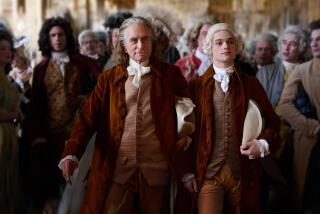Historic Static Over Kite, Key Trick
PHILADELPHIA — PHILADELPHIA -- Legend has it that 250 years ago in June, Benjamin Franklin sailed a kite and a key into a stormy Philadelphia sky and made a shocking discovery: Lightning was a form of electricity.
His test sparked criticism from clergy, who feared he was challenging God, and earned him acclaim in America and Europe as one of the greatest minds of his era. It continues to generate debate among some historians who say Franklin might not have even conducted the experiment taught to generations of schoolchildren.
“When I teach Franklin, I always try to plant the seeds of doubt in the minds of my students” about the kite-and-key experiment, said Richard Rosen, science historian and dean of Drexel University’s College of Arts and Sciences. “Even if he did do it, we don’t know exactly when or where, which is also part of the problem.”
Other historians, however, say there’s ample evidence the scholar, scientist and statesman did conduct the famous test--despite the fact that no firsthand account has been found, there were no witnesses other than Franklin’s son and the most specific details were recounted by Franklin’s colleague, Joseph Priestley, some 15 years later.
“It did happen,” said Roy E. Goodman, a historian and curator at the American Philosophical Society in Philadelphia. “We don’t have the place but we know it was conducted on the fringes of downtown, and we have Priestley’s report and his recollections from Franklin.”
According to that account, the 46-year-old inventor and his 21-year-old son, William, set out one day in June 1752 to prove Franklin’s theory about the nature of lightning.
The pair went into a field to await a thunderstorm, and a passing storm cloud -- not a lightning bolt -- negatively charged the kite, string and key. Franklin wasn’t jolted because he was holding a piece of dry silk that insulated him from the charge. But when he touched the key, a spark jumped to his hand.
That discovery paved the way for later innovations from the battery to the dynamo.
“What Franklin showed was that the experiments on static electricity that were being done in the lab were not just for amusement but were related to the great forces of nature,” said I. Bernard Cohen, historian and author of “Benjamin Franklin’s Science.”
Franklin wasn’t the first person to see the similarities between earthbound static electricity and lightning, but he was the first to suggest a test to confirm that fact, said David Rhees, executive director of the Bakken Library and Museum in Minneapolis. The museum has created an exhibit to coincide with the experiment’s anniversary.
And even if the belief of many historians is true that a scientist in Marly, France, may have executed what was dubbed “the Philadelphia experiment” before Franklin’s test, there’s still plenty of reasons to celebrate his accomplishments, Rhees said.
“Franklin wasn’t the only one who came up with these ideas, which some historians may try to use to diminish his reputation, but the sheer genius of the man shines through,” he said. “He may have been scooped by the experiment at Marly, but it was an experiment based on Franklin’s suggestions in the first place.”
More to Read
Sign up for Essential California
The most important California stories and recommendations in your inbox every morning.
You may occasionally receive promotional content from the Los Angeles Times.










